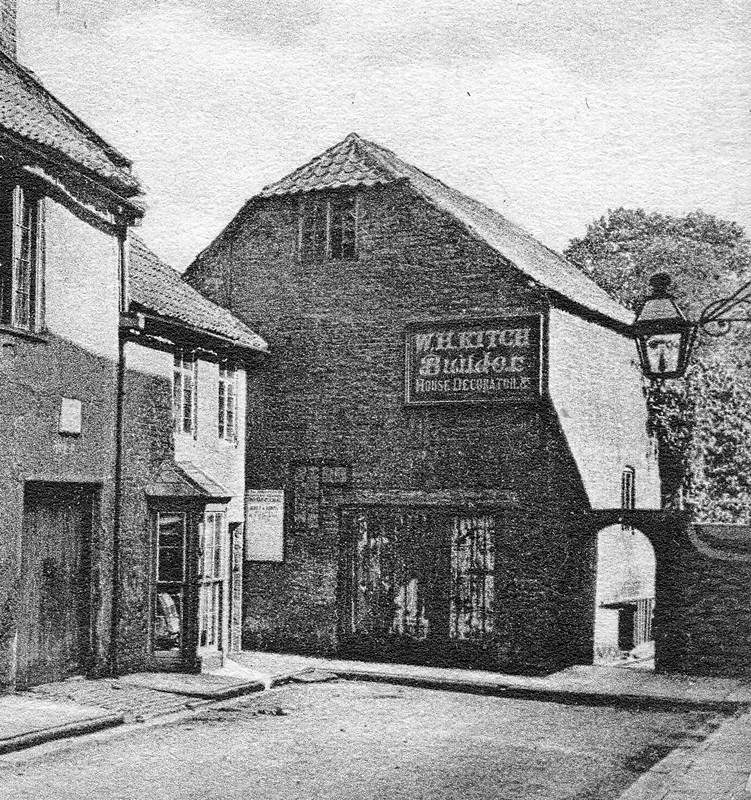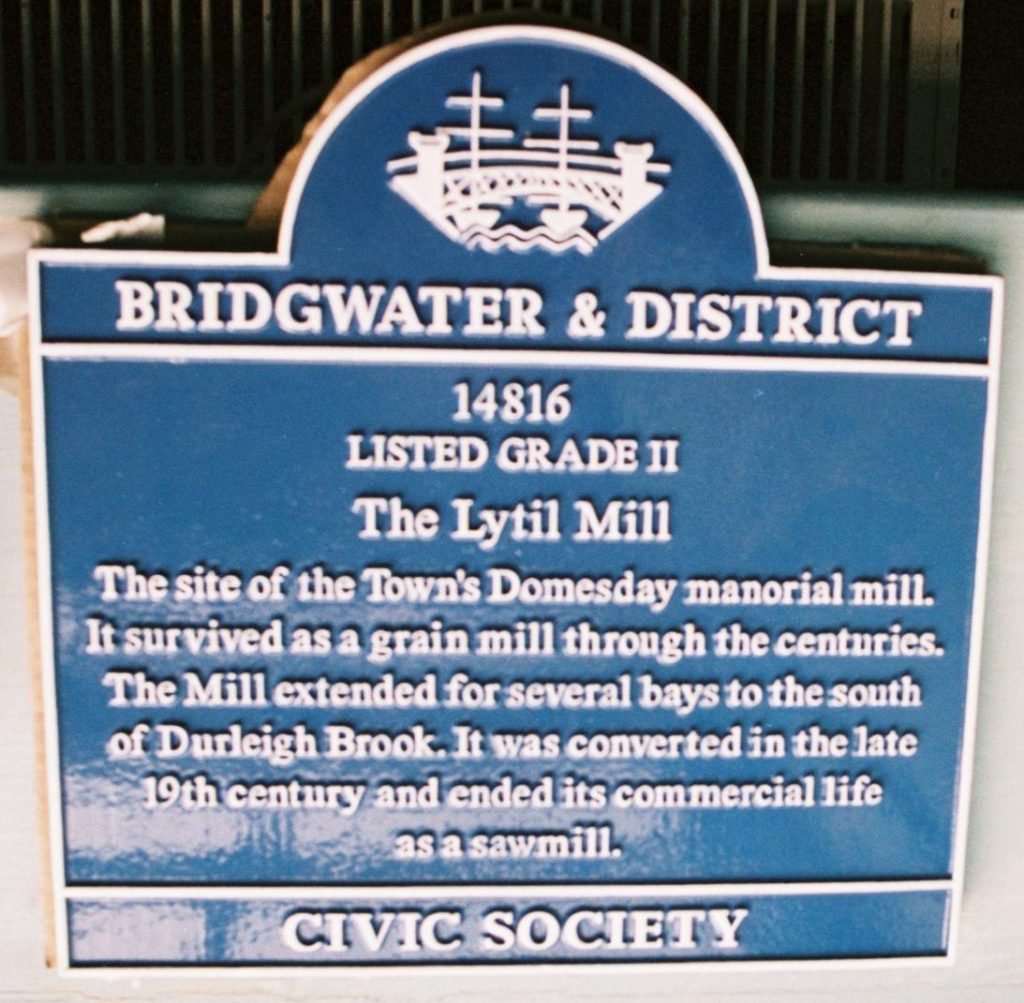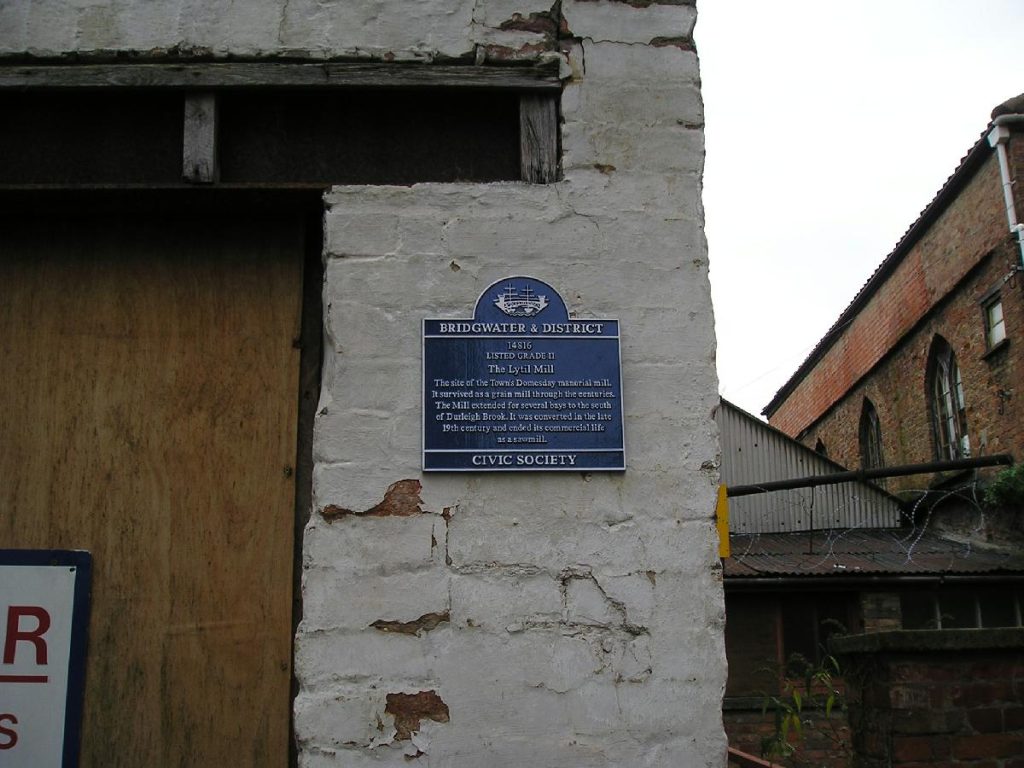This building was formally Bridgwater’s watermill, which was originally used to grind corn into flour. It was destroyed by fire in the early 1990s; although it is in ruins the mill pit, parts of the wheel and bits of old mechanism remain within, awaiting restoration. The wheel was powered by water from the Durleigh Brook. There is evidence that this watercourse was diverted from its natural route sometime before the street plan of the town was laid out in the early 1200s. As a mill was recorded in Bridgwater, or Brugie as it was then called, in the Domesday survey of 1086, it is possible that there has been a mill on this site since at least the eleventh century.
This building was first called the Lytil Mill in 1361. The designation of the mill as little would imply other larger mills in the area, of which there is evidence for several. There was the South Mill in Hamp, which was another watermill, a horse mill within the Castle and a tidal mill in Eastover near the ‘great dam’, roughly where Watson’s Lane is now. There were also several windmills outside of the town. Blake Street was formally known as Mill Lane before it was changed to honour Bridgwater’s most famous son. Dampiet Street nearby gets its name from the Dam of the mill. The Dam would have raised the water level of the Durleigh Brook, which made the stream fall over the wheel, instead of under it, which provided much more power.
In the early seventeenth century the Lytil Mill became known as the Town or Bridgwater Mill, suggesting that by that time it had become the only one of importance in the borough. By the mid nineteenth century it was no longer used for milling, but instead used as a sawmill. In the twentieth century it was used as a builder’s store, before it was bought for the Blake Museum in 1988. However before it could be converted it for use of the museum it was largely destroyed by fire in the early 1990s.

Bridgwater was first made into a town by William Briwere in 1200. Before this there was a small farming community, probably around a river crossing of some sort. This settlement was initially called Brugie, derived from the Old English word for Bridge. Bridge in this sense simply meant a man made improvement to a river crossing, which might mean that there was a bridge as we would understand it, although it might have been more akin to a substantial ford. The ‘-water’ part of Bridgwater is from the West-Country pronunciation of the given name Walter, which derives from the Norman nobleman Walter of Douai who owned the area in the early twelfth century. The name strictly means ‘the bridge which belongs to Walter’. The River Parrett’s name is so old the exact meaning is lost. Theories range from it deriving from the Old Welsh for ‘divider’ as the river once marked the border between the Britons and the English. It might also mean ‘four flows’ a reference to how the rivers Tone, Yeo and Isle flow into it, or it might mean something like the ‘Sweet River’.
Today Bridgwater incorporates many older and smaller settlements. Nearby Hamp simply means ‘the settlement’. The ‘p’ on the end helps with pronunciation, the old English Ham is where we have got the word ‘home’ from. Kidsbury means ‘the fortification belonging to Kydda’, the separate but very close village of Wembdon means either ‘hill of the hunter’ or ‘hill in the marshes’. Sydenham means ‘the settlement belonging to Sippa’, Bower simply means ‘cottage’, Durleigh means ‘the wood frequented by Deer’, Dunwear means ‘the low weir’ and Crowpill means ‘the river inlet frequented by crows’.
Also on Blake Street is the town museum, a late medieval house where General-at-Sea Robert Blake was probably born and raised, and next to that was once a grand Elizabethan mansion.
To learn more about the Mill, visit this page at Bridgwater Heritage.


